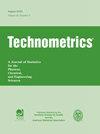生物统计学原理
IF 2.5
3区 工程技术
Q1 STATISTICS & PROBABILITY
引用次数: 0
摘要
生成可以用给定方法计算的数据。仿真可以用来排除不好的估计器,并向我们证明好的估计器的价值。第16章,固定效应,是关于固定效应,随机效应,固定效应在非线性模型和回归估计。固定效果是控制所有变量的方法,无论它们是否被观察到,只要它们在某些图层类别中保持不变。第17章,事件研究,是关于事件研究和他们如何工作。事件研究可能是最古老和最简单的因果推理研究设计。事件研究并在股票市场中进行,事件研究与回归,事件研究与多受影响的群体。第18章“差异中的差异”是关于一种方法,一种准实验方法,它涉及比较参加某一计划的人群(治疗组)和未参加该计划的人群(对照组)之间随时间的结果变化。它在数据分析中的有用性已经得到了感受和赞赏。第19章,工具变量,是关于工具变量的工作和隔离变异工具变量设计直接抓住随机对照实验的概念。对于工具变量的研究,我们必须满足两个假设:工具的相关性和工具的有效性。第20章,回归不连续,是关于回归不连续的。回归不连续集中于在截止点指定的处理。重点介绍了运行变量或强制变量的概念、截止、带宽、普通最小二乘回归不连续和密度不连续检验。第21章,流氓画廊:其他方法,表明研究设计的世界太广了,不能在一本书中容纳。有方法和设计,有旧的也有新的,有经过测试的也有未经测试的。这一章表明,还有很多其他的方法是新的,但还在发展中。在这些奇异的方法中,本章讨论了综合控制、矩阵补全、因果发现、双机器学习、异质效应建模、因果森林、分类效应和结构估计。这一章可能在第一次阅读时难以理解,因为这一章的内容要么太高级,要么太新,无法掌握和理解。第22章,在地毯下,是关于假设和关注的,这是几乎任何因果推理研究的一部分,但经常被忽视或至少被搁置一边。总的来说,这本书虽然篇幅很大,但对文学世界来说是一个极好的补充。这本书包含了大量的例子和精美的图表,有助于更清楚地理解这些概念。这是一次精彩的展览,展示了研究设计和因果关系的各个部分。本文章由计算机程序翻译,如有差异,请以英文原文为准。
Principles of Biostatistics
to produce data that we can evaluate with a given method. Simulation can be used to rule out bad estimators and prove the value of good estimators to ourselves. Chapter 16, Fixed Effects, is about fixed effects, random effects, and fixed effects in the non-linear model and regression estimators. Fixed effects are methods of controlling for all variables whether they are observed or not, as long as they stay constant within some layer category. Chapter 17, Event Studies, is about event studies and how they work. The event study is probably the oldest and simplest causal inference research design. Event studies and performed in the stock market, event studies with regression, and event studies with multiple affected groups. Chapter 18, Differences-in-Differences, is about a method, a quasi-experimental approach that is concerned with comparing the changes in outcomes over time between a population enrolled in a program (the treatment group) and a population that is not (the comparison group). Its usefulness in data analysis has already been felt and appreciated. Chapter 19, Instrumental Variables, is about the working of instrumental variables and isolating variation instrumental variables designs seize directly on the concept of randomized control experiment. For work on instrumental variables, we must satisfy two assumptions: relevance of the instrument and validity of the instrument. Chapter 20, Regression Discontinuity, is about regression discontinuity. Regression discontinuity focuses on treatment that is assigned at a cutoff. It also focuses on the concept of running variable or forcing variable, cutoff, bandwidth, regression discontinuity with ordinary least squares, and the density discontinuity test. Chapter 21, A Gallery of Rogues: Other Methods, shows that the world of research design is too wide to be accommodated in a single book. There are methods and designs, both old and new, both tested and untested. This chapter demonstrates that there is a world of other methods that are new and yet developing. Among such exotic methods, the chapter talks about synthetic control, matrix completion, causal discovery, double machine learning, modeling of heterogeneous effects, causal forests, sorted effects, and structural estimation. This chapter could be inaccessible at the first reading, as the content of the chapter is either too advanced or too new to be grasped and understood. Chapter 22, Under the Rug, is all about the assumptions and concerns that are a part of pretty much any causal inference research study, but which often gets ignored or at least brushed aside. Overall, this book, though very voluminous, is an excellent addition to the world of literature. The book contains a good number of examples and wonderfully drawn diagrams, that facilitate a clearer understanding of the concepts. It is a wonderful exhibition of the parts and parcels of research design and causality.
求助全文
通过发布文献求助,成功后即可免费获取论文全文。
去求助
来源期刊

Technometrics
管理科学-统计学与概率论
CiteScore
4.50
自引率
16.00%
发文量
59
审稿时长
>12 weeks
期刊介绍:
Technometrics is a Journal of Statistics for the Physical, Chemical, and Engineering Sciences, and is published Quarterly by the American Society for Quality and the American Statistical Association.Since its inception in 1959, the mission of Technometrics has been to contribute to the development and use of statistical methods in the physical, chemical, and engineering sciences.
 求助内容:
求助内容: 应助结果提醒方式:
应助结果提醒方式:


